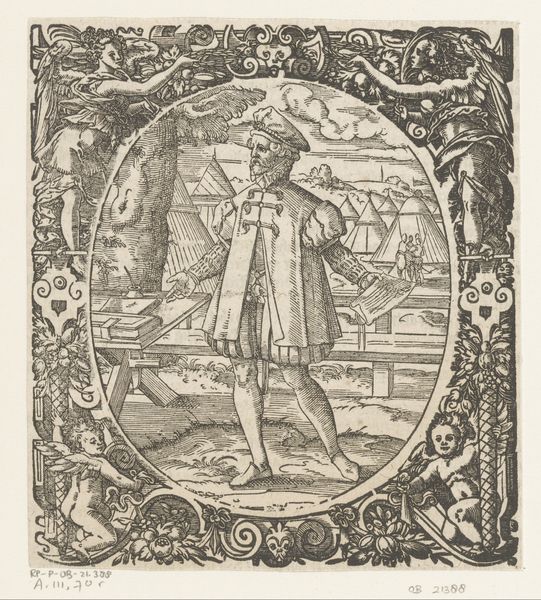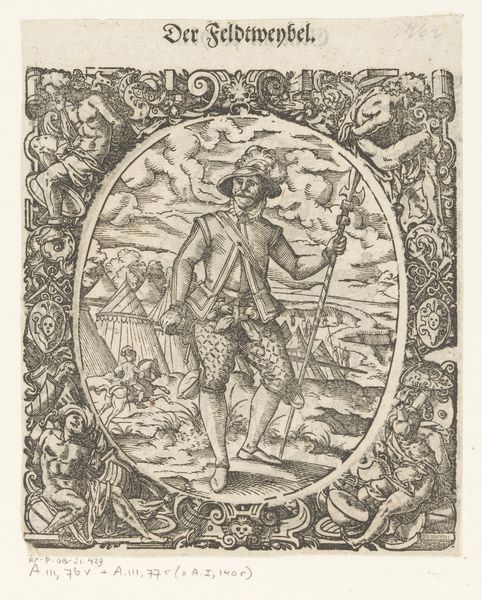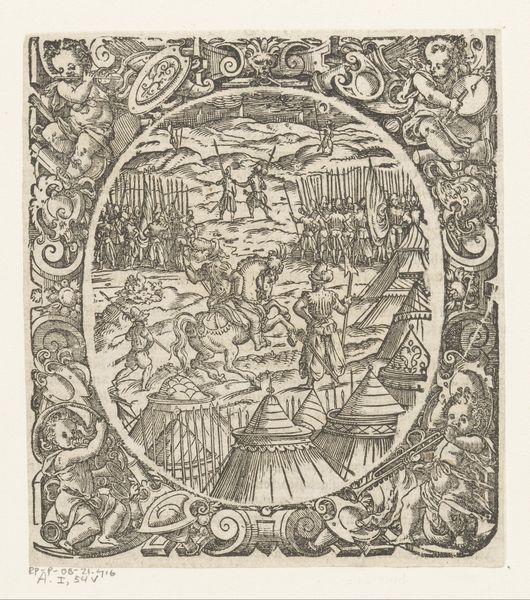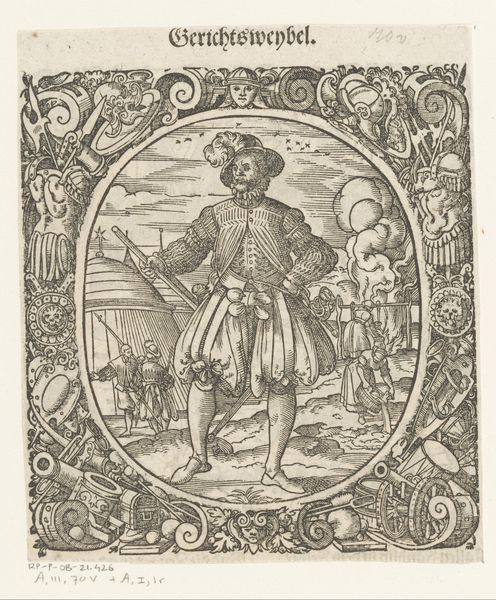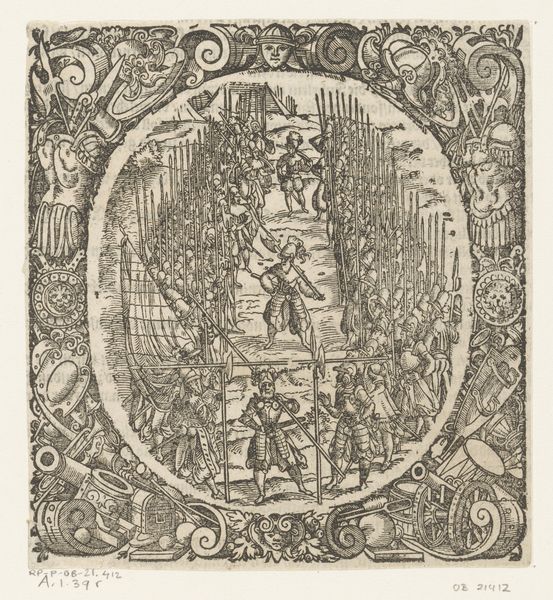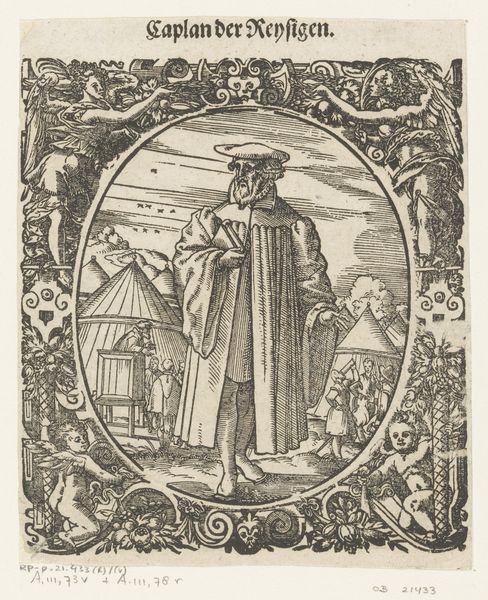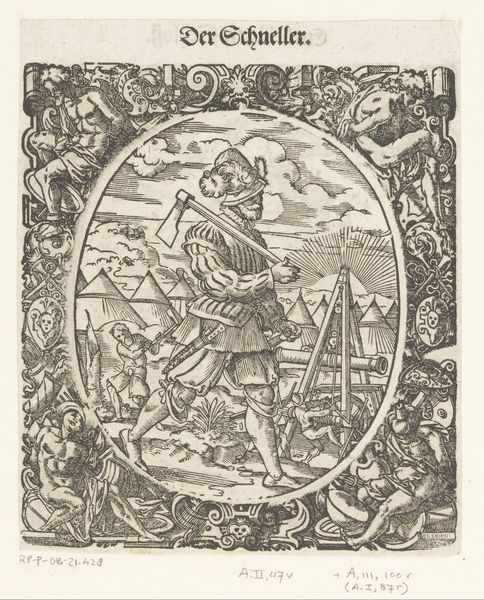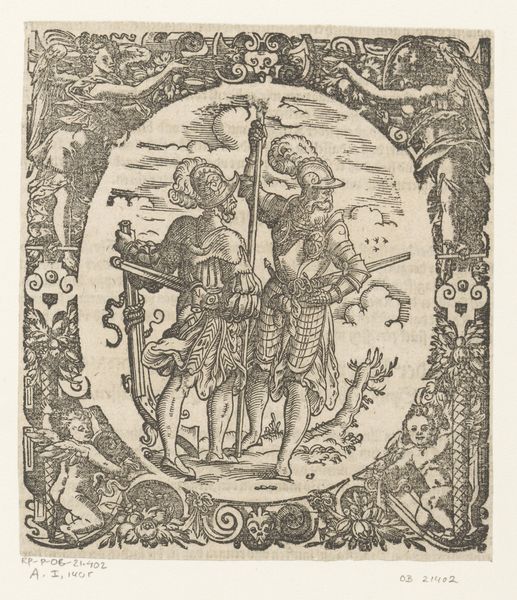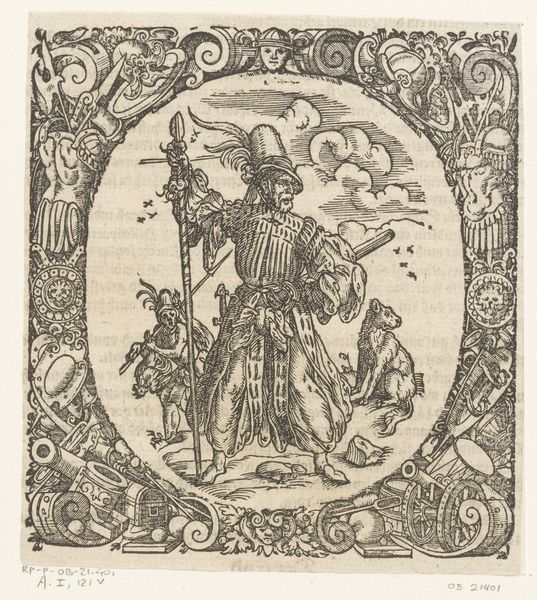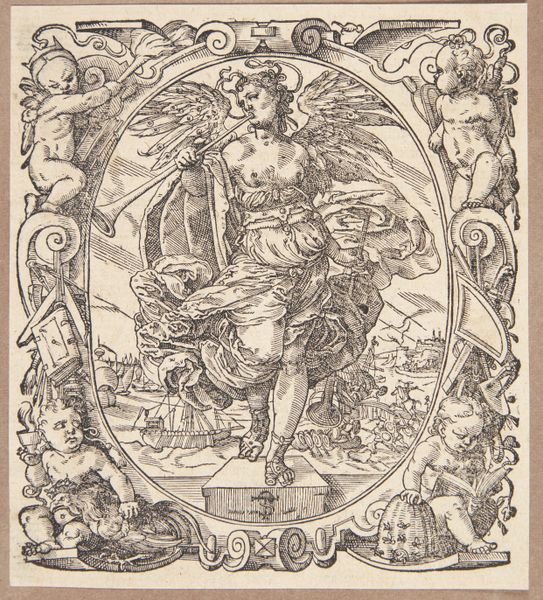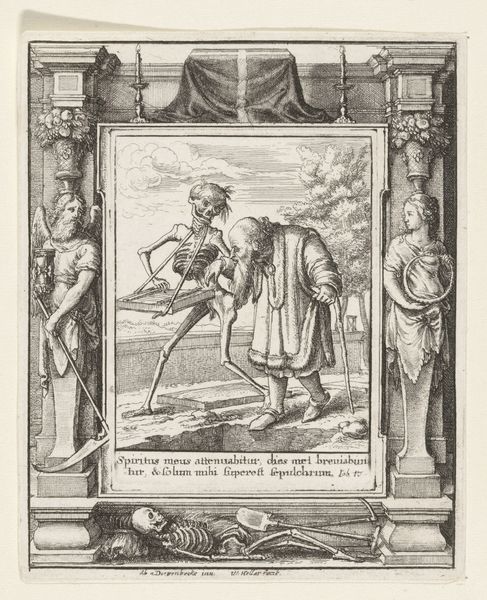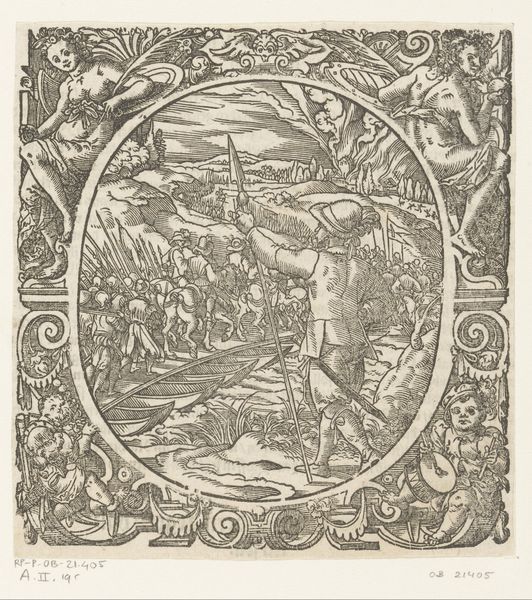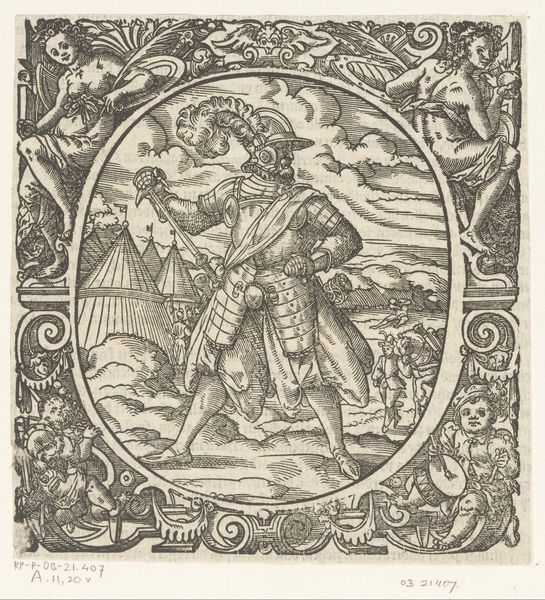
print, engraving
# print
#
figuration
#
history-painting
#
northern-renaissance
#
engraving
Dimensions: height 145 mm, width 128 mm, height 115 mm, width 95 mm
Copyright: Rijks Museum: Open Domain
Editor: Here we have Jost Amman's "Military Man at a Walled Tent Camp," from 1573, created using engraving. The scene feels meticulously ordered, yet the details of military life depicted appear rather stark. What strikes you most about this piece? Curator: This image, seemingly straightforward, opens a window into the complex social hierarchies of 16th-century military life. Beyond the individual soldier, consider the visual rhetoric Amman employs. The fortified camp suggests not just protection, but also enclosure, perhaps reflecting the limited social mobility and rigid structures inherent in military service. Editor: That’s a very different take from my initial perspective. I hadn’t considered the image as commentary on social mobility. Curator: The act of portraying the military through print makes it more accessible, reaching audiences beyond the elite. Think about who controlled the narrative of conflict at this time. The symbolism—are the cherubs symbols of divine support, or ironic commentary on the brutalities of war? Are the boundaries clearly defined by the artist? Editor: It's interesting to think of these prints as early forms of propaganda, intended for the common person. It really changes my perception of its meaning and influence. Curator: Precisely. The print isn’t just documentation. It’s a crafted narrative meant to shape perceptions of power and military legitimacy during the upheavals of the Renaissance. Analyzing who benefits from this portrayal helps to reveal its underlying message. What do you think of this artwork now? Editor: Considering that artwork in this context is quite interesting; I see so much more depth and complexity than I initially did! It speaks volumes about the relationship between power, perception, and artistic expression.
Comments
No comments
Be the first to comment and join the conversation on the ultimate creative platform.
